Foraging in Inwood Park - July 17, 2011
Foraging in Inwood Park, Manhattan, New York, NY. Based on a tour given by "Wildman" Steve Brill. Except for the panorama, all pictures were taken with a 90mm equivalent macro lens. Hence all pictures are closeups. This time I used spot focusing and the ISO was set to 3200 to increase depth of field.
1: Hawthorn. Out of season.
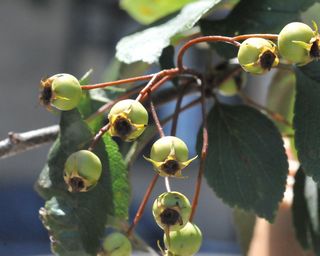
2: Burdock, first year.
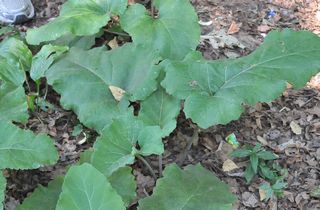
3: Burdock, first year. Note whiteness underneath.
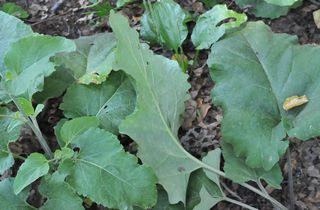
4: Burdock, second year.
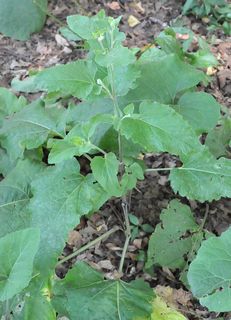
5: Burdock burrs.
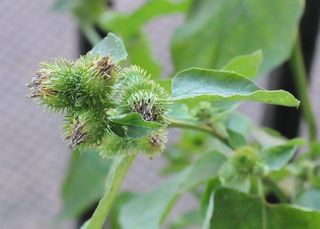
6: Wildman holding burdock root.
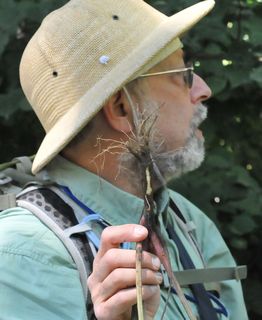
7: Digging up burdock root.
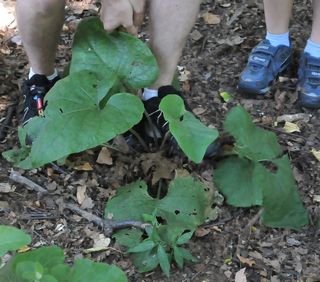
8: Wineberry.
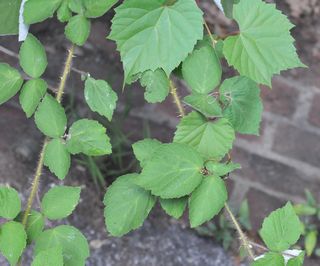
9: Poison ivy.
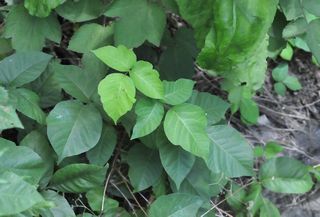
10: Mugwort.
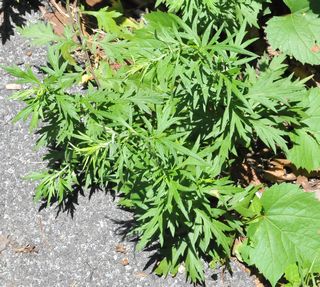
11: Common sow thistle.
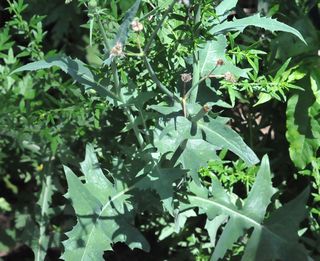
12: Common sow thistle.
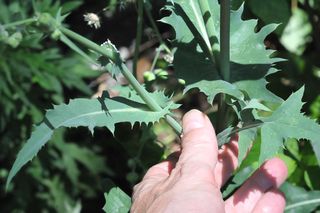
13: Garlic mustard, second year. Seeds are perfect to collect right now. Don't have to grind seeds to use. Note poison ivy in lower right.
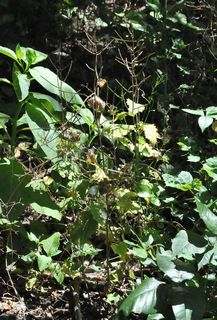
14: Lambs quarters.

15: Catnip flowers.

16: Catnip flowers. Note square stems and leaves in two.
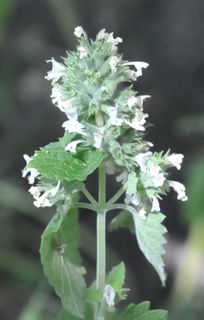
17: Catnip.

18: Asiatic day flower. Leaves taste like string beans. Seeds taste like peas.
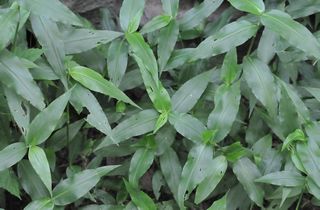
19: Asiatic day flower. Flower only lasts a day.

20: A couple of early blackberries.
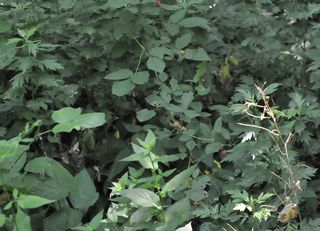
21: A grass that looks like Asiatic day flower. Like any grass, not poisonous, but not good to eat. See hairy stems.
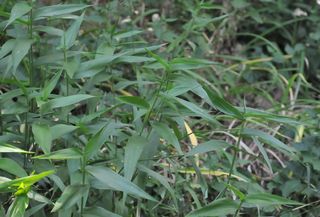
22: Black raspberry. Has powder blue stem. Berries long past.

23: Poison ivy vine form is all over the tree. Note the berries in the summer.
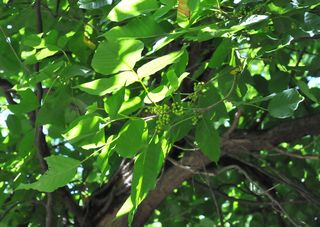
24: Grass look-a-like and Asiatic day flower. Asiatic day flower doesn't have hairy stems.
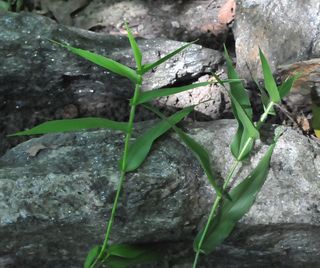
25: Wildman holding up stalk of jewelweed.

26: Jewelweed.
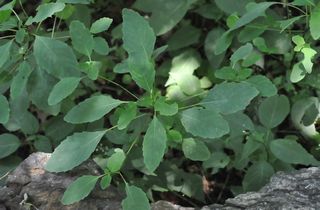
27: Japanese knotweed. Out of season.

28: Japanese knotweed. Note stems.
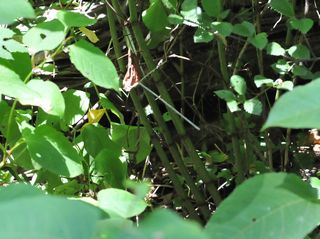
29: Jewelweed flower.
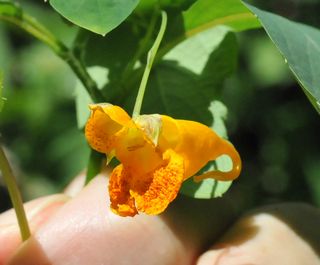
30: Enchanter's nightshade. Can't get seeds off socks.
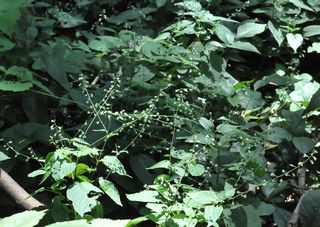
31: Staghorn sumac. A little early.

32: Staghorn sumac. A little early. When all dark red can make lemonade.
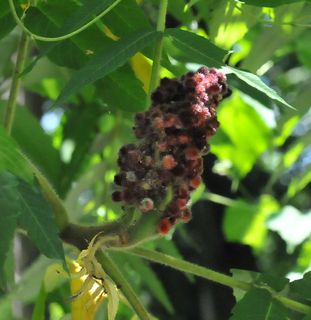
33: Staghorn sumac. A little early. Darker red when ripe. Have to be pointing upwards.
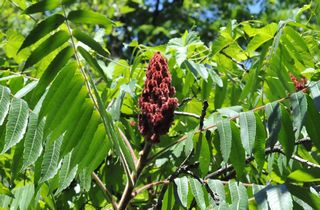
34: Wisteria. Flowers in Spring are edible.

35: A view of the Hudson River from the lookout where we ate lunch.

36: Unripe peach. Someone tossed a pit here and it grew.
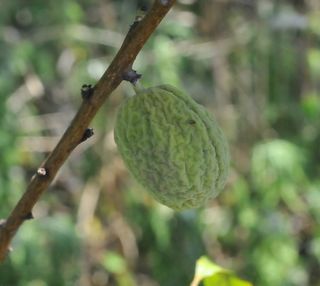
37: Pokeweed. Out of season. [Not on tour.]
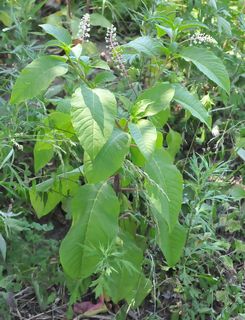
38: Bitter dock with seeds. [Not on tour.]
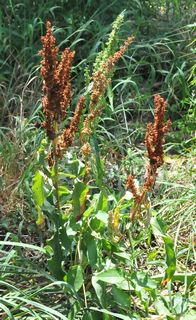
39: Poorman's pepper. Burned out in the lack of rain. [Not on tour.]
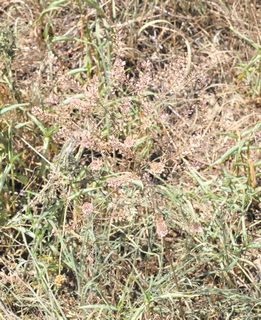
40: Field garlic.

41: Field garlic.
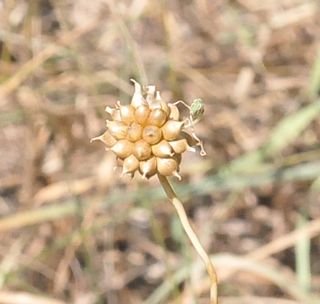
42: Pepper sedum. From the south. Needs heat to reproduce. Leaves are used to make tea. Berries when red are a seasoning.

43: Common spice bush.
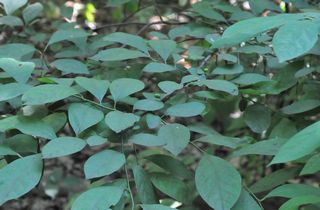
44: Common spice bush.
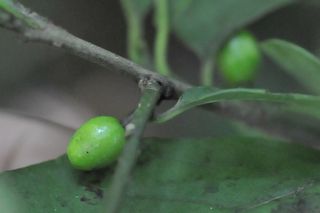
45: Common spice bush.
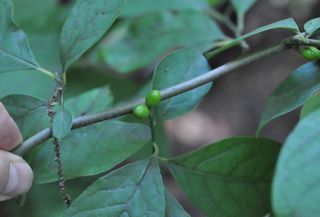
46: Wildman holds up sassafras leaves and explains the three shapes that can have.
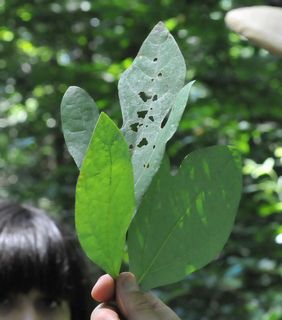
47: Sassafras root.
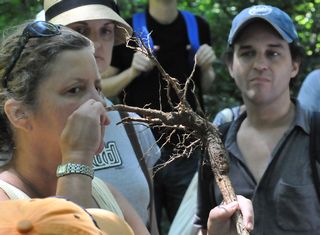
48: Sassafras leaves. Leaves also good in spring.
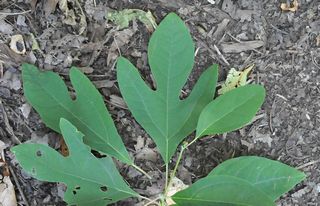
49: Black birch tree bark.
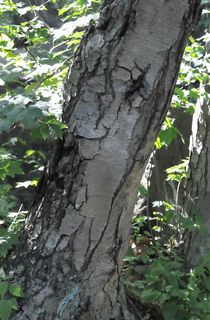
50: Black birch tree leaves.
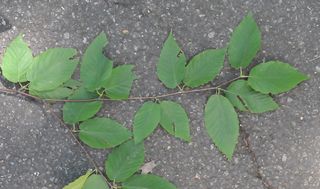
51: Wood sorrel.

52: Common elderberry.
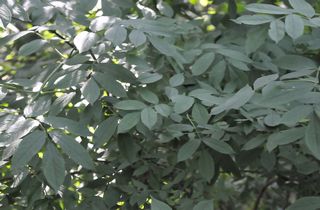
53: Kentucky coffee tree.
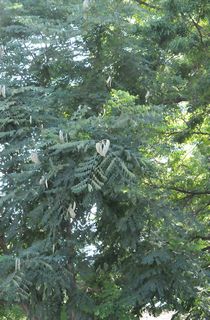
54: Kentucky coffee tree pods.
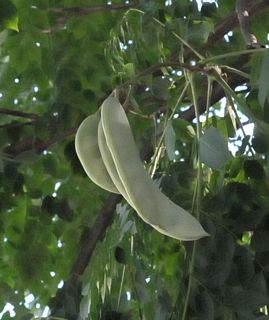
© Don Wiss 2011-2024. All rights reserved.




